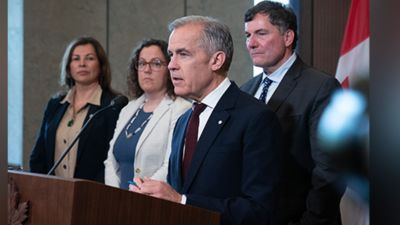Masood Azhar is a key figure in the history of terrorism against India. His journey includes his arrest in the Kashmir Valley and his activities while in jail, which allegedly helped fuel terrorist operations across the country. He was involved in forming new jihadi groups and is widely believed to be the mastermind behind the infamous Kandahar IC-814 hijacking. Following his release, he went on to establish Jaish-e-Mohammed, highlighting the significant challenges faced by the Indian state, its security forces, and the Jammu & Kashmir judiciary.
Early Life And Radicalisation
Masood Azhar was born in Bahawalpur, Punjab, Pakistan. During Operation Sindoor, India conducted a strike on Bahawalpur to avenge the Pahalgam terror attack. Azhar received his early education at Jamia Islamia Binori Town in Karachi, a well-known centre for radical teachings. By the early 1990s, he had risen to become a key leader of Harkat-ul-Mujahideen (HuM), an organisation deeply connected to global jihadist networks. His training and experiences in Afghanistan during this period laid the foundation for his future role as a terrorist leader.
How India Arrested Him?
Masood Azhar entered India in January 1994 using a false identity and forged travel documents. Indian security forces, tipped off about his presence on the J&K National Highway, arrested him while he was travelling in an auto rickshaw at Khanabal, a village near the Anantnag district headquarters. His arrest was a major success for Indian intelligence and law enforcement agencies. He was charged with illegal entry into the country and involvement in terrorist activities, including waging war against the state, under the Terrorist and Disruptive Activities (Prevention) Act.
Started Radicalising Jail Inmates
During his time in the high-security Kot Bhalwal jail near Jammu, Masood Azhar’s influence grew significantly. He used his position as an ideologue and recruiter to radicalise fellow inmates and some jail staff, building a network of loyal followers that included high-ranking police officers, even up to the rank of Inspector General. His followers often came to him seeking talismans, believed to hold special power. This kind of influence is common among ideologically motivated prisoners and highlights the challenges prison authorities face in preventing the spread of extremist ideas within correctional facilities.
Kidnapping, Killing And Hijacking For Azhar’s Release
For the release of the Azhar, India witnessed various attempts of kidnapping, murder and hijacking. In 1994, a tourist was kidnapped for his release. At least one was reportedly killed during a kidnapping attempt.
Kandahar Hijack
One of the most dramatic incidents linked to Masood Azhar was the hijacking of Indian Airlines Flight 814 on December 24, 1999. The flight was going from Kathmandu to Delhi when it was taken over by five hijackers and diverted to Kandahar in Afghanistan, which was under Taliban control at the time. The hijackers demanded the release of Masood Azhar and two other terrorists- Ahmed Omar Saeed Sheikh, a British Pakistani, and Mushtaq Ahmed Zargar, a Kashmiri.
After long talks and intense pressure to save the lives of the passengers, the Indian government agreed to the hijackers’ demands. Masood Azhar and the others were released, and then Foreign Minister Jaswant Singh flew with them to Kandahar. This decision remains one of the most debated in India’s fight against terrorism, as it highlighted the difficult choice between saving innocent lives and protecting national security in the long run.
Terror Cases Linked To Him
Azhar was one of the terrorists released by India in 1999 after the IC-814 hijacking. The Jaish chief has been linked to multiple terror attacks in India. The 2001 Parliament attack, the 2008 Mumbai attacks, and the 2019 Pulwama bombing are the major terror attacks linked to him. Although Islamabad officially claims that he is in custody, it is widely believed that he resides at the Jaish headquarters—Jamia Masjid Subhan Allah in Bahawalpur, about 100 kilometres from the Indian border












